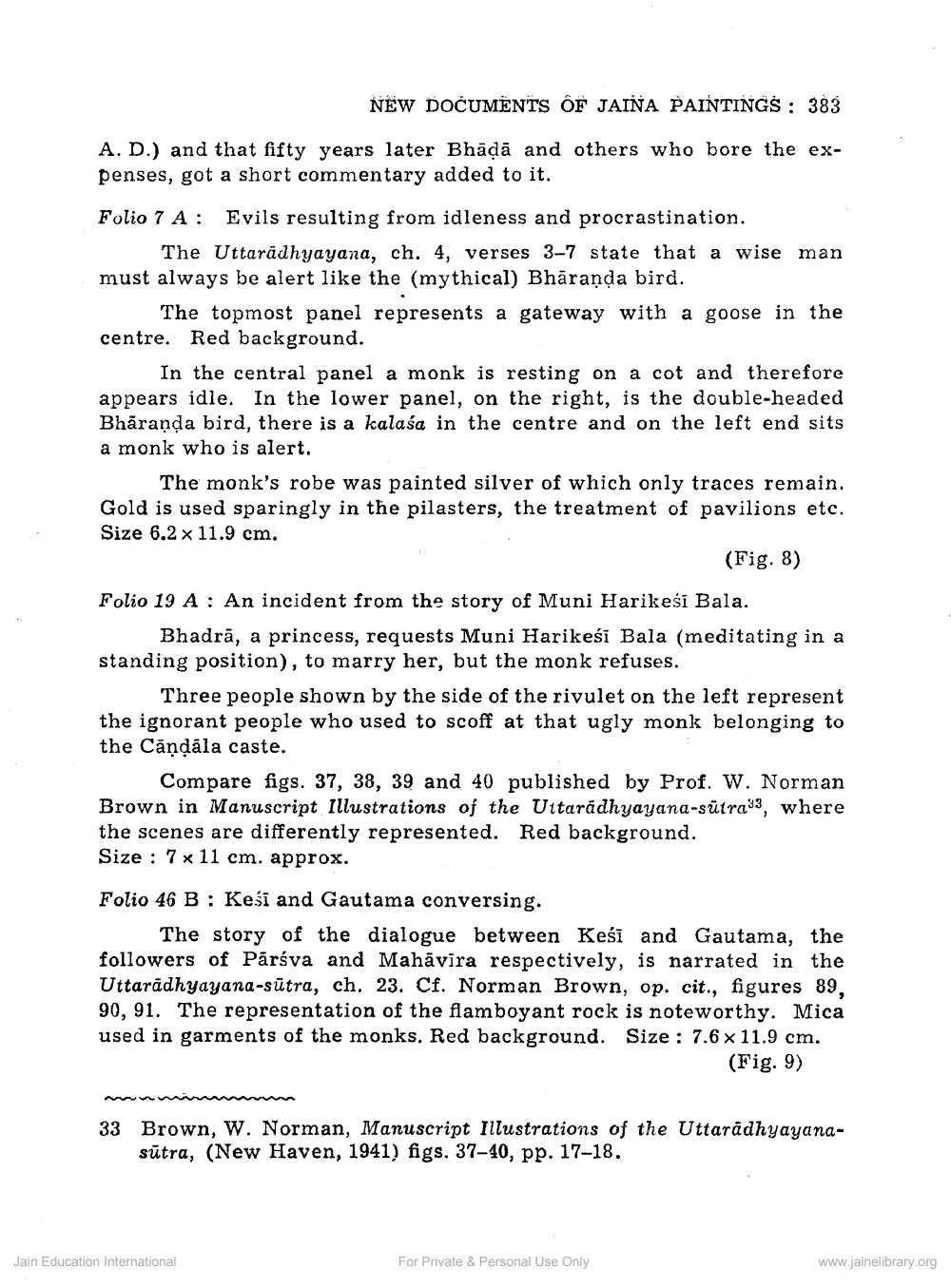________________
NEW DOCUMENTS OF JAINA PAINTINGS : 383
A. D.) and that fifty years later Bhādā and others who bore the expenses, got a short commentary added to it. Folio 7 A: Evils resulting from idleness and procrastination.
The Uttarādhyayana, ch. 4, verses 3-7 state that a wise man must always be alert like the (mythical) Bhāranda bird.
The topmost panel represents a gateway with a goose in the centre. Red background.
In the central panel a monk is resting on a cot and therefore appears idle. In the lower panel, on the right, is the double-headed Bhāranda bird, there is a kalasa in the centre and on the left end sits a monk who is alert.
The monk's robe was painted silver of which only traces remain. Gold is used sparingly in the pilasters, the treatment of pavilions etc. Size 6.2 x 11.9 cm.
(Fig. 8)
Folio 19 A : An incident from the story of Muni Harikesi Bala.
Bhadrā, a princess, requests Muni Harikesi Bala (meditating in a standing position), to marry her, but the monk refuses.
Three people shown by the side of the rivulet on the left represent the ignorant people who used to scoff at that ugly monk belonging to the Cāņdāla caste.
Compare figs. 37, 38, 39 and 40 published by Prof. W. Norman Brown in Manuscript Illustrations of the Uttaradhyayana-sūtra33, where the scenes are differently represented. Red background. Size : 7 x 11 cm. approx.
Folio 46 B: Kesi and Gautama conversing.
The story of the dialogue between Kesi and Gautama, the followers of Pārśva and Mahāvīra respectively, is narrated in the Uttarādhyayana-sūtra, ch. 23. Cf. Norman Brown, op. cit., figures 89, 90, 91. The representation of the flamboyant rock is noteworthy. Mica used in garments of the monks. Red background. Size : 7.6 x 11.9 cm.
(Fig. 9)
33 Brown, W. Norman, Manuscript Illustrations of the Uttaradhyayana
sūtra, (New Haven, 1941) figs. 37-40, pp. 17-18.
Jain Education International
For Private & Personal Use Only
www.jainelibrary.org




